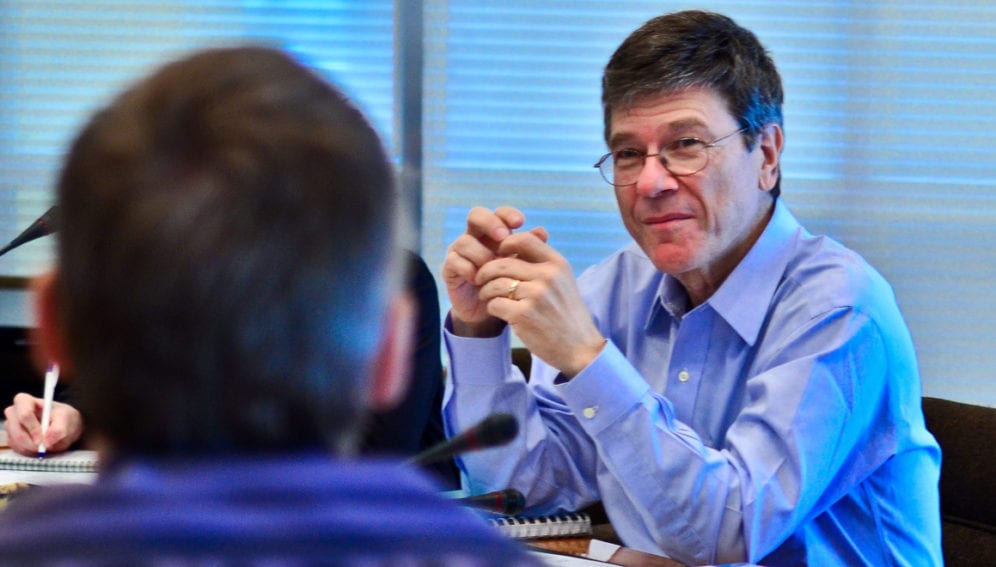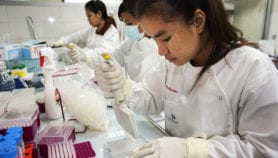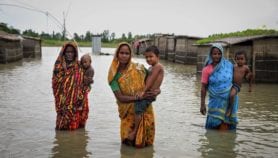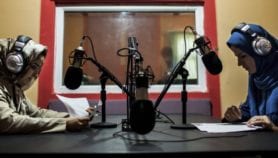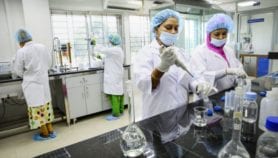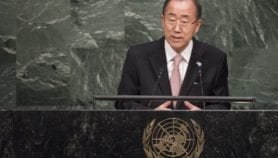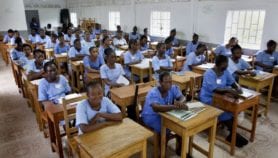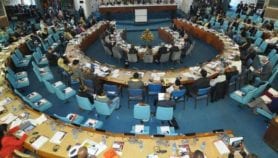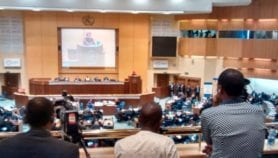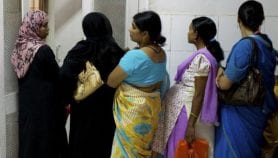By: Yojana Sharma
Send to a friend
The details you provide on this page will not be used to send unsolicited email, and will not be sold to a 3rd party. See privacy policy.
On Monday, the UN secretary-general will present the annual Millennium Development Goals Report, which assesses global and regional progress towards the goals, even as a new set of global development goals is being put together.
As work gets under way to devise and negotiate the Sustainable Development Goals (SDGs) to replace the Millennium Development Goals (MDGs) after 2015, the role of science and technology will be crucial.
Jeffrey Sachs, director of UN initiative the Sustainable Development Solutions Network (SDSN) and the UN secretary-general’s special advisor on the MDGs, tells SciDev.Net why he thinks the SDGs can end poverty, that they are science-based and what scientists can do to engage with the process.
The so-called zero draft on the SDGs, released on 2 June, lists 17 potential goals. Is it a good basis for what should replace the MDGs post 2015?
I think they’re on a very good track. I am very happy with the zero draft, though it’s going to be important to narrow the number of goals down significantly. I personally hope for ten or under, but what’s here now is strong. All the major themes of sustainable development are here — economic, social, environmental, governance and implementation aspects — and they are not in a list of dozens, but a list of 17 headlines.
Some experts have criticised the draft for not containing enough science. Can this be rectified as the negotiations progresses?
I don’t agree with that assessment, actually. What the scientific evidence has been telling us is in the draft. For example, ecological constraints. I like the concept of planetary boundaries or the Anthropocene and I think that is well represented in the draft.
What science has been telling us is that extreme poverty can be ended and I am delighted that SDG number one is about this. So it is science-based. After all, this is not a science document, but a global set of goals for humanity that cut across the core objectives of global society and they need to be based on good science and good understanding, and on good technologies. That’s all there. I don’t see that conflict at all in this draft.
The purpose of these goals in part will be to help mobilise and organise the various scientific communities, in health, in energy, human settlements, climate change. That’s what happened with the MDGs, but this time we have a jump start. With the MDGs, the goals came first and it took several years for the various separate communities to get organised around them. That process is already happening with the SDGs.
How can it be ensured that negotiations on the SDG targets are based on scientific evidence and are not reduced to political horse trading?
I hope the scientists are outspoken at this point, and many of them are. For example, the concept of limiting global warming to two degrees Celsius not only arose from the scientific community, but it has generated a good, robust debate within the scientific community on whether two degrees Celsius is, in fact, too high. That goal was adopted under the UN Framework Convention on Climate Change in 2010 and one of the things that I am fighting for is for that goal to be taken seriously both within the SDGs and within the context of the current climate negotiations.
In biodiversity, the message from the ecologists is overwhelming: we are in the midst of the sixth great planetary extinction, which has many fundamental drivers, and this is of major concern for humanity. That has been strongly represented in the draft as well.
Partly because this is a noisy world, scientists need to find ways to make sure they are heard, whether it’s through Future Earth or SDSN, or the many statements from national science academies or the Intergovernmental Panel on Climate Change. This is a world that has every capacity to ignore the scientific evidence, especially in my own country, the United States, so this is not simply about taking an article in the draft and expecting it to be the basis of global action, this is a major fight for public awareness, understanding, attention and resolve.
I know that behind the scenes and in the corridors there are plenty of attacks on the scientific evidence base — climate change being the most important of these — and this is where the scientific community absolutely has to raise its voice.
How has SDSN been doing this as the negotiations progress?
A group of us in SDSN are circulating a statement right now which we will deliver to world leaders on the two degrees Celsius limit and why it’s so essential. Scientists are very eager to sign up to that. We need to find ways and venues to be heard. SDSN will bring together scientists and world leaders at Columbia University on 22 September, the day before the UN climate summit meeting [in New York], precisely for the kind of briefing that sometimes the leaders don’t hear.
SDSN has been helpful in getting the academic community and research community involved in the target-setting process. Is there still some way to go on this?
There are two phases in the work of SDSN, but they are overlapping. One is to help the process of setting meaningful goals and we are engaged daily in that. The second is to create a network — mainly centred around universities, but also research institutions, national laboratories, and partnering with companies in different sectors — a network that will be there for the period of the SDGs to help with implementation. So we are trying to set up that ongoing network.
For the post-2015 period, we can use that network in different ways to help rapidly scale up SDG design and implementation because, when the SDGs are set, they will need to be implemented locally and nationally, and to some extent regionally — not globally. We’re counting on cities to have SDGs, nations will be required to have SDG programmes and to report on them, and success will require regional integration in almost all cases.
We are still working this out, but SDSN has established an independent organisation that will help manage and implement the SDGs in the future. So we’re trying to create a governance system and an organisational system that will have the lifespan of the SDGs.
How can SDSN help countries in the developing world gather the data on SDGs they need to measure them? This is important if targets are to be met.
The SDSN and the UN statistical division had a very robust two-day meeting in June on the indicators process and this produced an online document with more than 100 pages of very detailed discussion of which indicators to use how they should be collected, and what the timelines should be.
I’ve been special advisor on the MDGs for 14 years and I am emphasising all the time that we must have the data in real time to enable good, robust management on the ground. When poverty data comes after a five-year lag, it’s no good.
This is an extremely important approach: goal-based development. Maybe a better definition would be global, goal-based development. That’s unusual: defining the goals, defining the links between goals and actions, means of implementation, feedback mechanisms — thinking through the whole process.
In my opinion, it is not a rhetorical exercise, but the most powerful tool we have to actually change the direction of the global economy. It will raise eyebrows, certainly, in the business community and some others, but since we start from the proposition that the current trajectory is absolutely unsustainable and unworkable socially and environmentally, we need to change direction. We don’t have other means, other than, I believe, shared and clear aspirations and then the means to achieve them through this kind of goal-based process. So it is extremely important.
Does SDSN’s work on target setting and indicators take into account the possibility of future scientific advances? Will the targets be ambitious enough?
We can end poverty and we can end it within this generation. A justly famous essay of John Maynard Keynes from the 1930s which I love, Economic Possibilities for our Grandchildren, was based on his observation that technological progress makes it possible to see the end of poverty in Britain.
He wasn’t basing that on a specific technology, but on the continued march of technology. I have adopted that same position. But I’ve tried to add some organisational principles: which pathways of technology? How can this be done? We are in such an astounding era of technological advancement that we can’t even catch our breath, and translating that into solutions for humanity is quite a different thing.
Information technology penetrates all science: genomics, nanotechnology, materials science, agronomy, communication science, renewable energies and so forth. It is a reservoir of massive technological advance that we can call upon; it has to be uncapped.
When I wrote The End of Poverty in 2005, we were working in African villages. One of them had no telephone, either mobile or landline. Now telephones are ubiquitous, and broadband may not be in remote areas but it’s coming pretty quickly. I did not know in 2005 that that would be one of the biggest game-changers for Africa and the MDGs even within a ten-year period.
But setting a goal for very deep poverty reduction was based around the idea that that kind of technological progress is possible and even under way. The goals to end poverty and hunger everywhere were attacked by people as pie in the sky. But, in my view, there is no holding back on this: we are going to see some very bold target setting.
Some people roll their eyes and say the world is going to hell in a handbasket, how are you ever going to achieve those targets?
But the underlying principle is that we are experiencing massive advances in capacity and know-how. If we harness those in a determined, directed, motivated way, this can give us a tremendous boost. I do expect some ambitious SDG targets and I expect one of them to be ending extreme poverty by 2030. You can’t get more ambitious than that. It may not be achieved, but it is feasible.
Q&As are edited for length and clarity.


